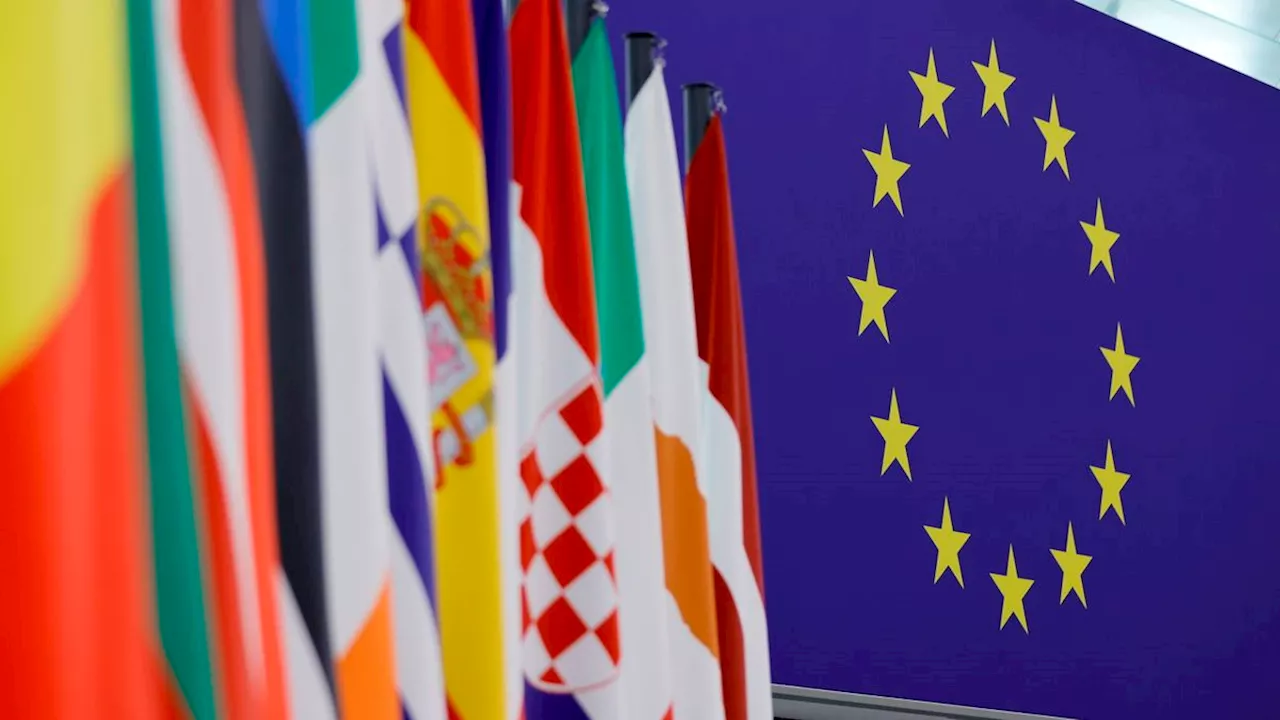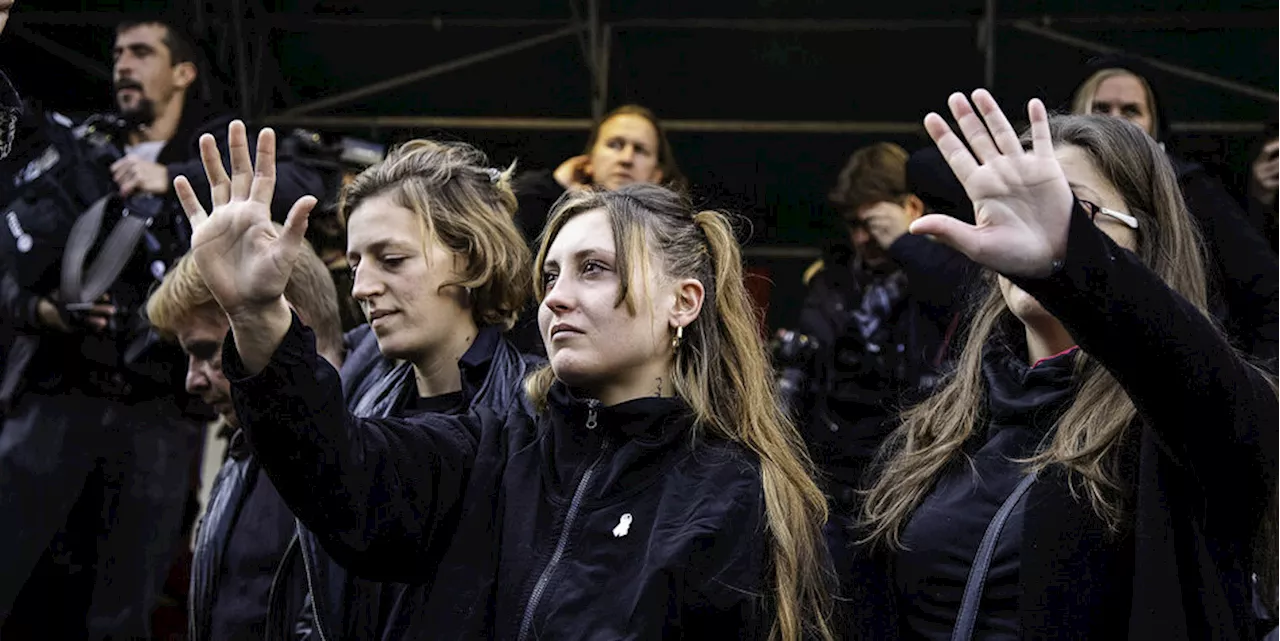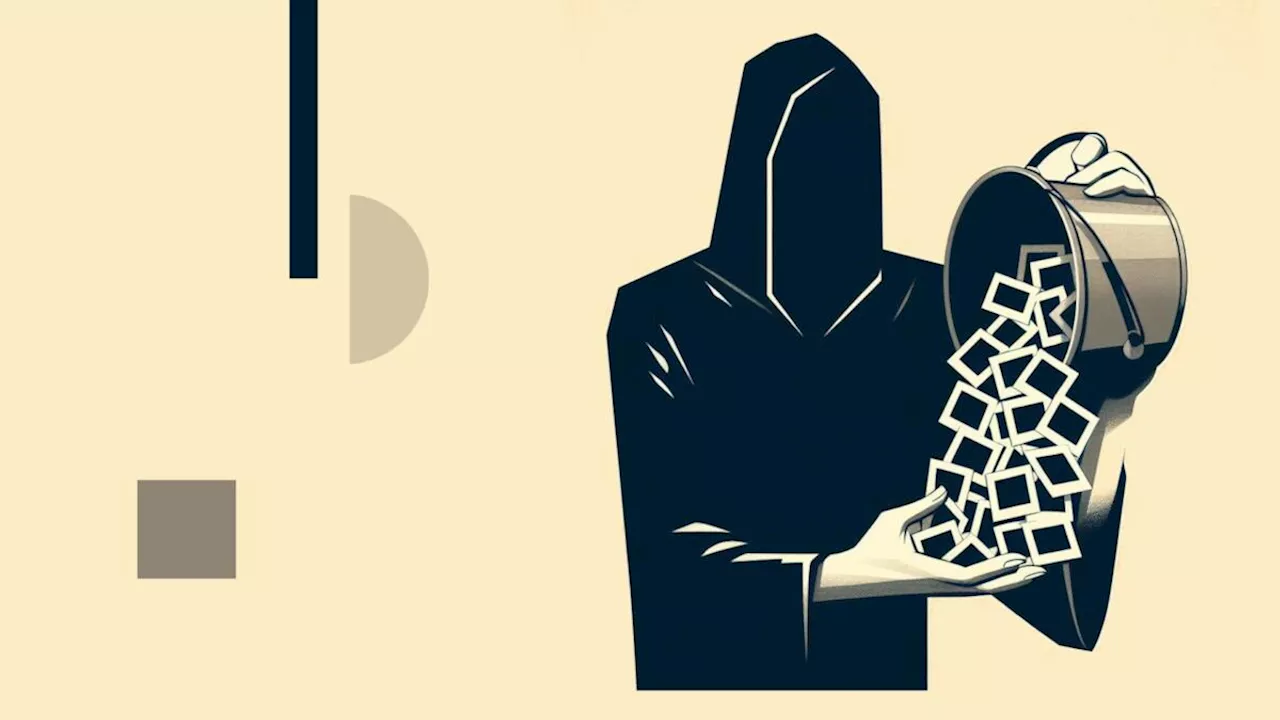Die EU hat sich jüngst auf eine Richtlinie geeinigt, die Frauen vor Gewalt schützen soll. Auch bildbasierte Gewalt und sexualisierte Deepfakes stehen unter Strafe – aber nur, wenn sie
, da sich die EU auf keine einheitliche Strafbarkeit von Vergewaltigung einigen konnte. Nun zeigt der Kompromisstext, dass weitere Schutzlücken für Betroffene bleiben.
Was diese beiden Einschränkungen genau bedeuten und welche Formen bildbasierter Gewalt damit durchs Raster fallen, werden wohl erst nationale Gesetze oder Gerichtsverfahren genauer beantworten können.
Viele Betroffene dürfte das aus einem bestimmten Grund empfindlich treffen: Nicht ernst genommen zu werden und sich rechtfertigen zu müssen gehört zu den größten Problemen, von denen Längst kursieren Programme, bei denen Nutzer*innen bloß das Foto einer bekleideten Person hochladen müssen – und die Software generiert daraus ein fotorealistisches Nacktbild. Aus Sicht der EU entsteht den Betroffenen dabei kein Schaden.
Proposal for a DIRECTIVE OF THE EUROPEAN PARLIAMENT AND OF THE COUNCIL on combating violence against women and domestic violenceHaving regard to the Treaty on the Functioning of the European Union, and in particular Article 82 and Article 83 thereof,After transmission of the draft legislative act to the national parliaments,Acting in accordance with the ordinary legislative procedure, Whereas:
The provisions of this Directive which relate to the rights of victims should apply to all victims of criminal conduct which amounts to violence against women or domestic violence, as criminalised under Union or national law.
Violence against women is a persisting manifestation of structural discrimination against women, resulting from historically unequal power relations between women and men. It is a form of gender-based violence, which is inflicted primarily on women and girls, by men. It is rooted in socially constructed roles, behaviours, activities and attributes that a given society considers appropriate for women and men.
Violence against women and domestic violence can be exacerbated where it intersects with discrimination based on a combination of sex and other grounds of discrimination referred to in Article 21 of the Charter, namely race, colour, ethnic or social origin, genetic features, language, religion or belief, political or any other opinion, membership of a national minority, property, birth, disability, age or sexual orientation.
A directive shall be binding, as to the result to be achieved, upon each Member State to which it is addressed, but shall leave to the national authorities the choice of form and methods. However, given the special nature of the offense of female genital mutilation, and the need to ensure the protection of victims who suffer specific damage, this offence should be specifically addressed in the criminal laws of the Member States.
The dissemination of images, videos or other material depicting sexually explicit activities or the intimate parts of a person without the consent of the person involved to the public by means of information and communication technologies should not be criminalised, where required to safeguard the fundamental rights protected under the Charter, and in particular the freedom of expression, including the freedom to receive and impart information and ideas in an open and democratic society, as...
In order to ensure a fair balance between freedom of expression and the prosecution of the offence of incitement to violence or hatred, Member States should be able to choose to punish only conducts, which are carried out in a manner likely to disturb public order or which are threatening, abusive or insulting. The application of these conditions, where required by national law, should not lead to undermining the effectiveness of the provision.
Member States may extend legal aid, including free legal aid, to victims when reporting criminal offences, when provided by national law. When assessing the victim’s resources in order to grant legal aid, Members states should consider the victim’s effective access to his or her financial resources. Domestic violence can translate in economical control from the perpetrator, victims may not have effective access to their own financial resources.
Delays in processing complaints of violence against women and domestic violence can bear particular risks to victims thereof, given that they might still be in immediate danger and that offenders might often be close family members or spouses. Therefore, the competent authorities should be properly trained, have the adequate expertise and effective investigative tools to investigate and prosecute such acts, without having to set up specialised services or units.
In order to ensure comprehensive support and protection to victims, all competent authorities and relevant bodies, not limited to law enforcement and judicial authorities, should be involved in assessing the risks for victims and appropriate support measures on the basis of clear guidelines issued by the Member States.
Without constituting a substitute to arrest and detention of suspects and offenders, which remain subject to national law, Member States should ensure that emergency barring, restraining or protection orders may be issued in situations of immediate danger, such as where harm is imminent or has already materialised and is likely to be inflicted again, and that, in such relevant situations, and where pursuant to national law, such orders are subject to a victim’s application, victims are informed...
Presenting evidence of past sexual behaviour, the sexual preferences of the victim and the attire or outfit of the victim to challenge the credibility and lack of consent of victims in sexual violence cases, especially rape cases, may reinforce the perpetuation of damaging stereotypes of victims and lead to repeat or secondary victimisation.
6 Council Directive 2004/113/EC of 13 December 2004 implementing the principle of equal treatment between men and women in the access to and supply of goods and services, . Any such measures to remove or disable access, including in particular such orders, are liable to affect the right and interests of other parties than the victims, such as the persons providing the material, the hosting services providers whose services may be used and the end-users of those services, as well the general interest.
Assistance and support to victims of violence against women and domestic violence should be provided before, during and for an appropriate period after the criminal proceedings have ended, for example where medical treatment is still needed to address the severe physical or psychological consequences of the violence, or if the victim’s safety is at risk in particular due to the statements made by the victim in those proceedings.
Specialist support services, including shelters and rape crisis centres, should be considered essential during crises and states of emergency, including during health crises. The aim should be to continue to offer these services in situations where instances of domestic violence and violence against women tend to surge. The traumatic nature of sexual violence, including rape, requires a particularly sensitive response by trained and specialised staff.
To effectively address negative consequences for children, support measures to children should include specialised psychological counselling adapted to the age, the developmental needs and the individual situation of the child, together with paediatric care where necessary, and be provided as soon as competent authorities have reasonable grounds to believe that children might have been victims, including child witnesses.
Member States should take measures to prevent the cultivation of harmful gender stereotypes to eradicate the idea of the inferiority of women or stereotyped roles of women and men. This could also include measures aimed at ensuring that culture, custom, religion, tradition or honour is not perceived as a justification for, or a more lenient treatment of, offences of violence against women or domestic violence.
Intervention programmes should be set up to prevent and minimise the risk of committing offences of violence against women or domestic violence or reoffending. Such programmes should be carried out by trained and skilled professionals. The programmes should specifically aim at ensuring safe relations and teaching offenders or those at risk of offending how to adopt non-violent behaviour in interpersonal relationships and how to counter violent behavioural patterns.
In order to ensure that victims of the offences of cyber violence contained in this Directive can effectively realise their rights to have illegal material relating to such offences removed, Member States should encourage the self-regulatory cooperation between relevant intermediary service providers.
Member States should ensure that the data collected are limited to what is strictly necessary in relation to supporting the monitoring of the prevalence and trends of violence against women and domestic violence and design new policy strategies in this field. Member States should provide required data to the European Institute of Gender Equality in order to allow for the comparability, assessment and analysis of those data at Union level.
11 Regulation 2018/1725 of the European Parliament and of the Council of 23 October 2018 on the protection of natural persons with regard to the processing of personal data by the Union institutions, bodies, offices and agencies and on the free movement of such data, and repealing Regulation No 45/2001 and Decision No 1247/2002/EC, .
Since the objective of this Directive, namely to prevent and combat violence against women and domestic violence across the Union on the basis of common minimum rules, cannot be sufficiently achieved by the Member States but can rather, by reason of the scale and effects of the envisaged measures, be better achieved at Union level, the Union may adopt measures, in accordance with the principle of subsidiarity as set out in Article 5 of the Treaty on European Union.
Deutschland Neuesten Nachrichten, Deutschland Schlagzeilen
Similar News:Sie können auch ähnliche Nachrichten wie diese lesen, die wir aus anderen Nachrichtenquellen gesammelt haben.
 Richtlinie zu geschlechtsspezifischer Gewalt: EU will Frauen gegen Gewalt schützen – aber klammert Vergewaltigungen ausMit einer Richtlinie einigt sich die EU auf ein gemeinsames Vorgehen für den Schutz von Frauen. Das Vorhaben berücksichtigt aber einen zentralen Punkt nicht – auch wegen der Blockade der Bundesregierung.
Richtlinie zu geschlechtsspezifischer Gewalt: EU will Frauen gegen Gewalt schützen – aber klammert Vergewaltigungen ausMit einer Richtlinie einigt sich die EU auf ein gemeinsames Vorgehen für den Schutz von Frauen. Das Vorhaben berücksichtigt aber einen zentralen Punkt nicht – auch wegen der Blockade der Bundesregierung.
Weiterlesen »
 EU-Richtlinie zu Gewalt gegen Frauen: Deutschlands Nein zu „Ja heißt Ja“Gewalt gegen Frauen soll in der EU bald einheitlich bestraft werden. Eine „Ja heißt Ja“-Regelung ist nicht Teil der Richtlinie. Deutschland hat das blockiert.
EU-Richtlinie zu Gewalt gegen Frauen: Deutschlands Nein zu „Ja heißt Ja“Gewalt gegen Frauen soll in der EU bald einheitlich bestraft werden. Eine „Ja heißt Ja“-Regelung ist nicht Teil der Richtlinie. Deutschland hat das blockiert.
Weiterlesen »
 „One Billion Rising“: Ministerin Nonnemacher und Staatssekretärin Dr. Töpfer setzen Zeichen gegen Gewalt an Frauen„Rise for Freedom“ („Aufstehen für Freiheit“) lautet auch in diesem Jahr das Motto der Kampagne „One Billion Rising“ („Eine Milliarde erhebt sich
„One Billion Rising“: Ministerin Nonnemacher und Staatssekretärin Dr. Töpfer setzen Zeichen gegen Gewalt an Frauen„Rise for Freedom“ („Aufstehen für Freiheit“) lautet auch in diesem Jahr das Motto der Kampagne „One Billion Rising“ („Eine Milliarde erhebt sich
Weiterlesen »
 „Große Enttäuschung“: EU will Frauen einheitlich vor Gewalt schützen – außer vor VergewaltigungDie EU hat sich auf eine Richtlinie geeinigt, die Frauen besser vor Gewalt bewahren soll, auch im Internet. Bildbasierte Gewalt steht künftig ausdrücklich unter Strafe. Doch an einem Gesetz gegen Vergewaltigung ist die EU gescheitert.
„Große Enttäuschung“: EU will Frauen einheitlich vor Gewalt schützen – außer vor VergewaltigungDie EU hat sich auf eine Richtlinie geeinigt, die Frauen besser vor Gewalt bewahren soll, auch im Internet. Bildbasierte Gewalt steht künftig ausdrücklich unter Strafe. Doch an einem Gesetz gegen Vergewaltigung ist die EU gescheitert.
Weiterlesen »
 Proteste gegen Grüne: Özdemir warnt vor Gewalt bei BauerndemosAm Samstag musste die Polizei in Magdeburg eine parteiinterne Veranstaltung mit der Bundesvorsitzenden Ricarda Lang schützen. Rund 200 Bauern hatten sich Lang mit 90 Traktoren in den Weg gestellt.
Proteste gegen Grüne: Özdemir warnt vor Gewalt bei BauerndemosAm Samstag musste die Polizei in Magdeburg eine parteiinterne Veranstaltung mit der Bundesvorsitzenden Ricarda Lang schützen. Rund 200 Bauern hatten sich Lang mit 90 Traktoren in den Weg gestellt.
Weiterlesen »
 Hass und Gewalt im Netz: Studie zeigt Verbreitung von Anfeindungen und DrohungenEine Studie zeigt, dass mehr als die Hälfte der befragten deutschsprachigen Internetnutzer bereits im Netz beleidigt wurde. Ein Viertel wurde schon einmal mit körperlicher Gewalt bedroht. Die Studie befasst sich auch mit sexualisierter Gewalt im Netz und zeigt, dass 11 Prozent der Befragten angaben, dass intime Fotos oder Videos von ihnen verbreitet wurden.
Hass und Gewalt im Netz: Studie zeigt Verbreitung von Anfeindungen und DrohungenEine Studie zeigt, dass mehr als die Hälfte der befragten deutschsprachigen Internetnutzer bereits im Netz beleidigt wurde. Ein Viertel wurde schon einmal mit körperlicher Gewalt bedroht. Die Studie befasst sich auch mit sexualisierter Gewalt im Netz und zeigt, dass 11 Prozent der Befragten angaben, dass intime Fotos oder Videos von ihnen verbreitet wurden.
Weiterlesen »
